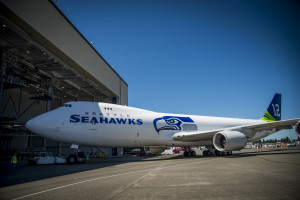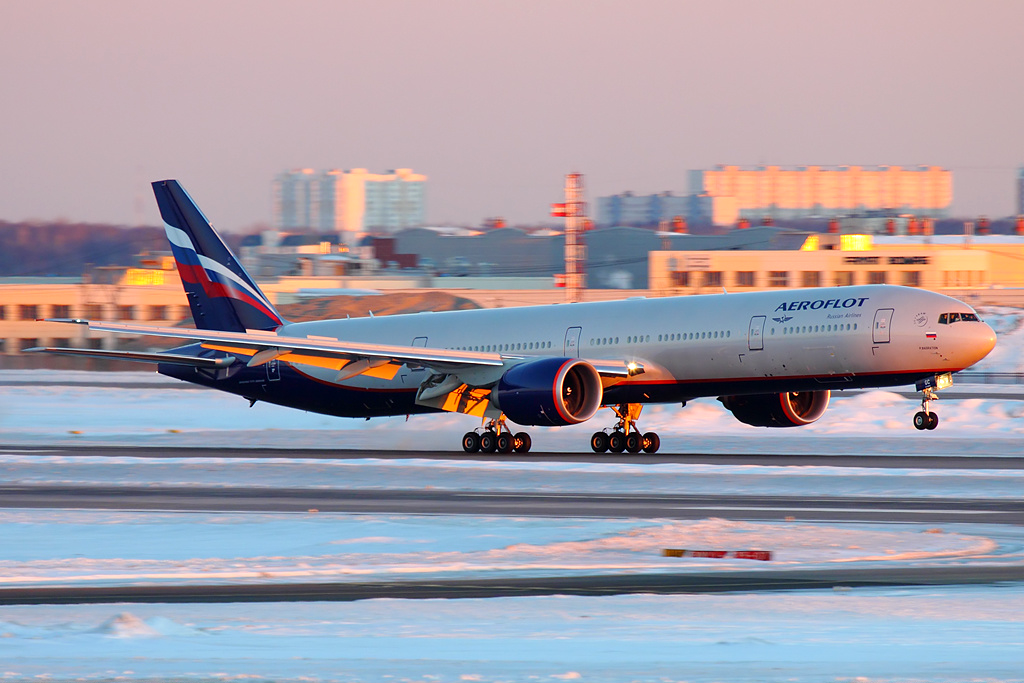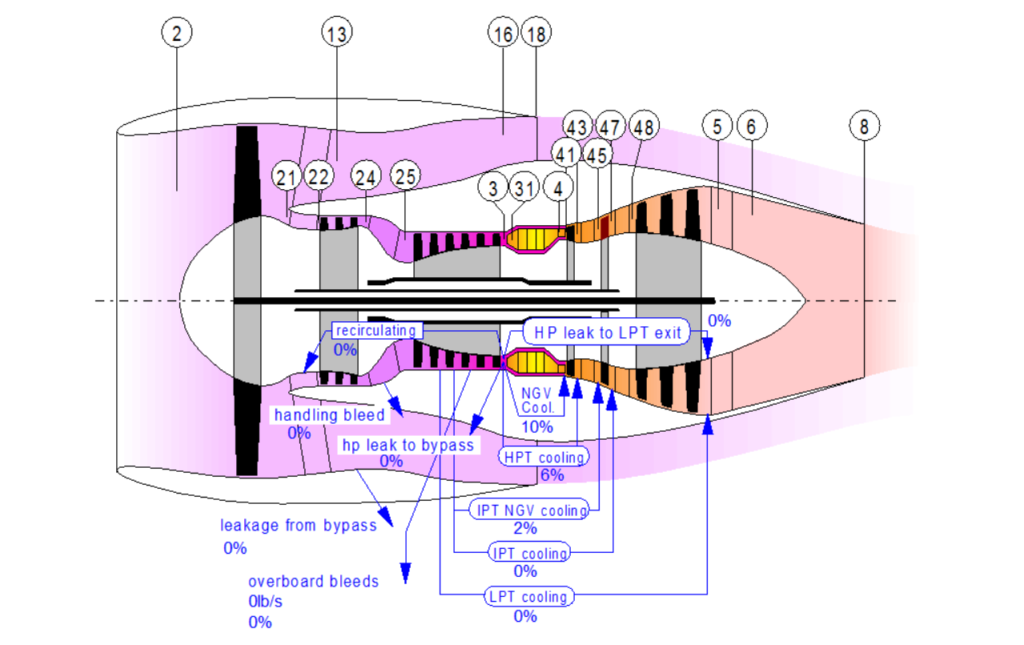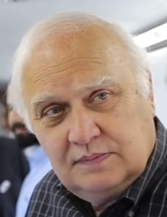Leeham News and Analysis
There's more to real news than a news release.
Aeroflot, the route to a modern airline
By Bjorn Fehrm
April 12, 2017, ©. Leeham Co: Aeroflot, established as the Soviet Union’s flag carrier in 1923, transformed from a state enterprise to a modern airline group after the fall of the Soviet Union in 1991.
The airline is today Europe’s seventh largest airline, two-thirds the size of Turkish Airlines, but having the same fast growth since 2005. We will cover Aeroflot’s journey in a series of articles, starting with the group’s history.
Bjorn’s Corner: Aircraft engine maintenance, Part 4
March 24, 2017, ©. Leeham Co: After covering the maintenance market for single-aisle engines, time has come for the engines used on wide-body aircraft. The engine maintenance for a wide-body engine is a bit different to the single-aisle engine. The difference is caused by the longer flight times for the wide-bodies. This makes the flight time wear a more dominant maintenance driver than it is for the single-aisle engines.
The changes in overhaul work caused by the difference in flight profiles and the lower number of engines in the market (compared to the single aisles) will affect how the overhaul market is structured and who are the dominant players.
Bjorn’s Corner; The Chinese civil aircraft industry
September 30, 2016, ©. Leeham Co: In our Corners on East bloc aeronautical industries, we will now look at the Chinese civil aircraft industry.
The Chinese aero industry has similarities with the Russian industry in its overall structure. From the start of the industry in the 1950s, it was structured after the Soviet model of research institutes, design bureaus and production companies.
The difference to the Soviet Union was that its own Chinese aircraft designs only started in the 1970s. Before that, the industry built Soviet designs on license and then modified versions of licensed designs.
The first own aircraft designs were presented in the 1980s with a focus on military designs for the first 20 years. Read more
Russian-Chinese wide-body: background and outlook
By Bjorn Fehrm
Subscription required.
Introduction
August 21, 2016, ©. Leeham Co: The discussions around a joint Russian and Chinese development of a 250-300 seat wide-body has been going on for years.
The project got a more concrete form at President Putin’s visit to China in June. On the 25th of June visit, an inter-governmental agreement to develop and market the aircraft was signed.
At the same time Russia’s United Aircraft Corporation (UAC) and Commercial Aircraft Corporation of China (COMAC) agreed to establish a joint venture for the program.
What market is this aircraft trying to address and will it become a serious player in the wide-body market? Will it give the duopoly Airbus/Boeing something to worry about?
We will address these questions in a series of articles. Before going into the questions around the wide-body program, we will look at the players, UAC and COMAC. Are they up to the job of making a competitive wide-body aircraft?
Summary:
- Russia and China enter the wide-body project with widely different knowledge bases.
- China’s first airliner project, ARJ21, just received local certification after years of delays.
- Russia has produced over 10,000 airliners and has made two generations of wide-body aircraft in the size category.
- The latest wide-body aircraft, Ilyushin IL-96, is on the level of Airbus A340-300 from a technological basis.
Pontifications: Why the 787-8 is no longer favored by Boeing
March 21, 2016, © Leeham Co: My Pontifications for the last two weeks examined how the Airbus and Boeing messaging continues to do battle for the product line ups. Boeing continues to denigrate the Airbus widebody line and Airbus fighting back, using Boeing’s own tactics alleging a product gap.
Boeing claims then A330neo is “dead on arrival” and the Airbus widebody strategy is “a mess.” Neither claim holds up under scrutiny. Certainly there is some weakness in the Airbus line: the A330-200 sales slowed to a trickle and the A330neo, especially the -800, has yet to truly advance. The A380 struggles and the A350-1000 is slow—but after the initial, unique splurge of the 777X, sales of this airplane have been anemic, too.
Airbus points out the sales of the 787-8 have dried up. So have sales of the 777-300ER, in sharp contrast to the unexpectedly strong sales for the A330ceo—enough so that Airbus is taking the production rate back up, to 7/mo, from the previously announced reduction to 6/mo.
Here’s why the 787-8 has become a dying sub-type.
Minuscule demand for Boeing 747-8F
- See Scott Hamilton’s new column for Forbes on-line, It’s time for hard questions for Boeing.
Subscription Required
Introduction

One of Boeing’s white tail 747-8Fs. This, and another that has been stored, was painted in the livery of the Seattle Seahawks. Boeing photo.
Jan. 25, 2016, © Leeham Co. Boeing’s decision to cut the production rate on the 747-8 is not a surprise. It’s only a surprise that it took officials so long to do so.
The company continues to cling to the hope of a recovery in the global air cargo market to sustain the program. This is unlikely, however.
The business case for the 747-8F is minuscule.
Summary
- The metrics of the global freight market have simply changed too much.
- Load factors for freight remain stuck below 45%.
- Yields continue to be low.
- Shifting trends from main deck freighters to using lower deck space on the big passenger airlines continues to grow.
- Low fuel prices, temporary though they may be, diminish the new for new 747-8Fs.
- Low capital cost 747-400 Passenger models stored in the desert or soon to be exiting the world’s fleet, along with stored 747-400Fs, provide ample opportunity for cheap freighters.
C-17: the end of an era
Dec. 1,2015: The last C-17 flew off the Boeing production line in Long Beach (CA) last week, ending aircraft
The final C-17 before taking off from the Long Beach (CA) production plant Boeing acquired in the McDonnell Douglas merger of 1997. MDC designed the C-17. Los Angeles Times photo.
production at the former McDonnell Douglas plant that began delivering Douglas DC-8s at the start of the jet age.
It’s the end of an era that lasted six decades.
Prior to producing the DC-8 at Long Beach, Douglas Aircraft Co. built its long line of piston airliners at the Santa Monica (CA) Airport.
The DC-8 was followed by the DC-9, DC-10, the DC-9 Super 80 series, the MD-11, the MD-90 and the final commercial airliner at Long Beach, the MD-95/Boeing 717. The C-17 was the only military aircraft built here.
Here’s a photo array dedicated to this storied history.
Air show coming to Paine Field
Sept. 3, 2015: An air show this weekend at which about 60 aircraft will be on display, many taking part in flying, will begin Friday at Paine Field, Everett (WA), the home to Boeing’s wide-body production plants.
The Historic Flight Foundation (HFF) sponsors the event, which kicks off Friday evening with a dinner and dancing from the Big Band era of World War II.
https://youtu.be/ESrmKMmsYx8
Aircraft pre-dating the War will be flown at 10am Saturday. WW II era trainers fly at 11am. War Birds fly at 1pm and a Douglas DC-3 in Pan American World Airways colors flies at 5pm. Rides may be purchased on many of the airplanes on Saturday and Sunday.
WW II veteran fliers will be present to answer questions and talk about the vintage warbirds that will be on display. The DC-3 flew with the China National Aviation Corp. over the Hump, supplying troops in China from bases in India.
One of the veterans who will be present is Johnny Oberto, 93, who was a test pilot for the Navy throughout the war.
Pontifications: re-engining airliners and the A380
June 1, 2015, c. Leeham Co. The Paris Air Show begins in two weeks. One thing that won’t happen is the launch of the Airbus A380neo.
We still think it will happen, though at a later date.
Re-engining the A380 is highly controversial. The A380 is the plane critics love to hate. You can argue whether it should have been built in the first place. You can argue whether it was 10 years too soon. You can argue whether Airbus misjudged the size of the market. You can even argue its passenger appeal. I haven’t flown on the A380 yet, so I can’t speak from personal experience on the latter. I’ve previously discussed the other points.
You can argue whether the airplane should be re-engined. Leeham News concluded in January 2014 Airbus really had no choice but to re-engine the A380 if it wants to continue offering the model. If done inexpensively (a relative term, to be sure), it makes sense given the arrival around 2020 of the Boeing 777-9. It’s when design creep happens that trouble arises. Just ask Boeing on the 747-8.
Emirates Airlines says it will buy up to 200 A380neos if Airbus proceeds. Qatar Airways expresses interest. Lufthansa Airlines said a neo is needed to keep the A380 viable in the future, though it hasn’t taken the next step of saying it will buy more.
Re-engining is hardly new. Let’s take a look. Read more








